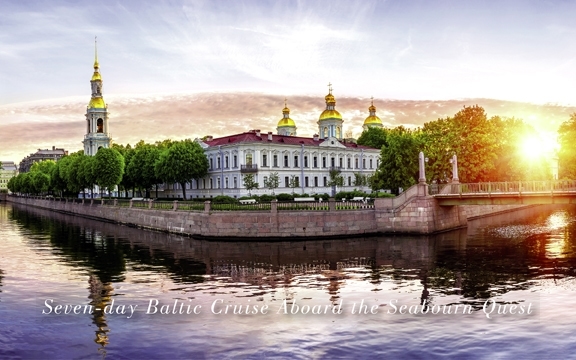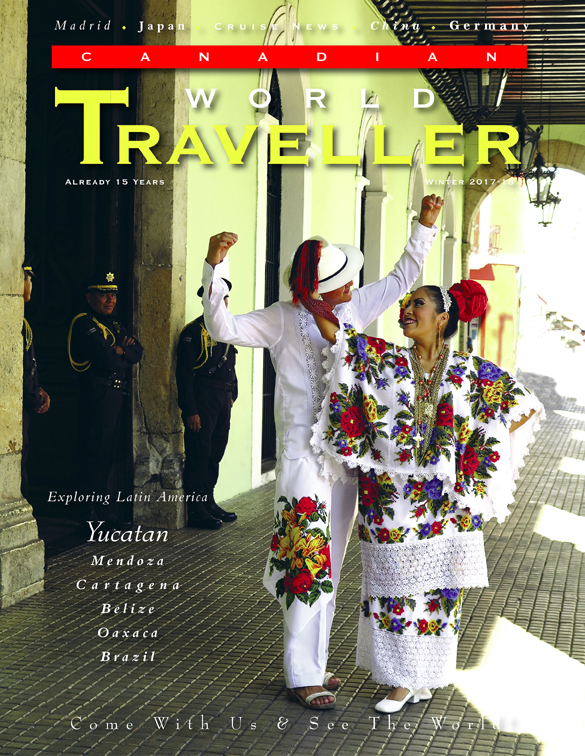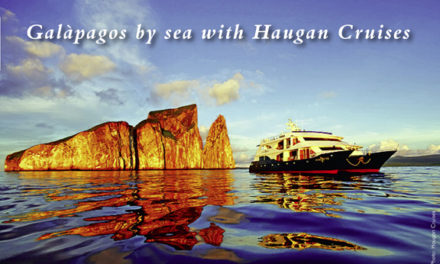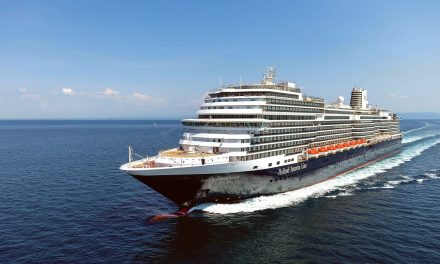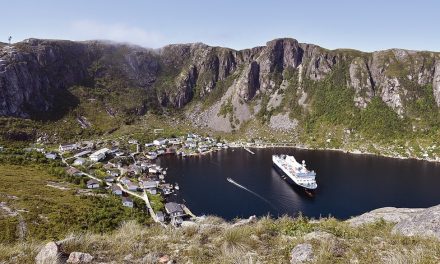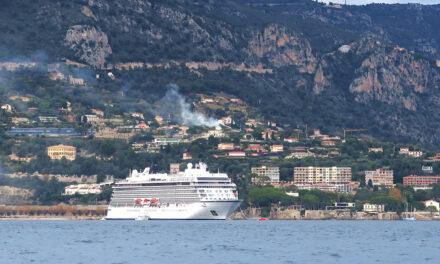The Baltic
Seven-day Baltic Cruise Aboard the Seabourn Quest
by Olivia Balsinger
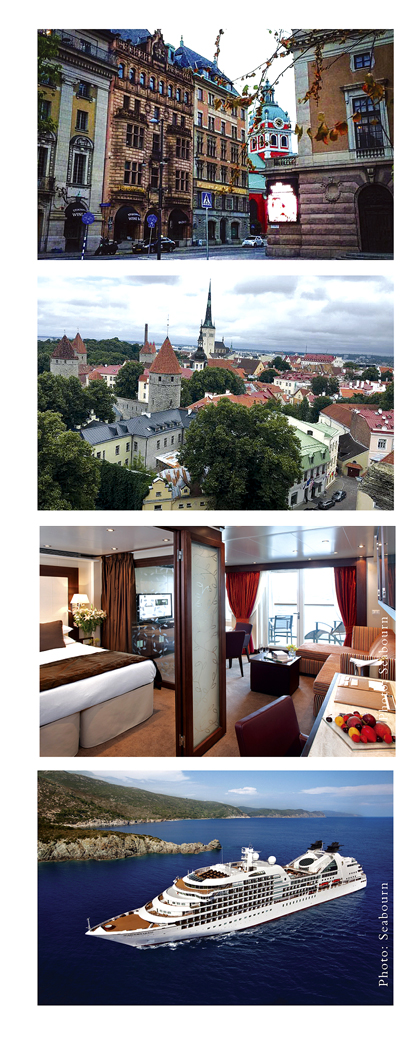
“Welcome aboard Miss Balsinger. Enjoy this glass of bubbly and may we assist you in settling in?” What a way to begin. I strolled the red carpet towards the majestic Seabourn Quest, docked delicately in the Stockholm harbor, ready to embark on a seven-day journey through the Baltics.
As a seasoned traveler, I have experienced luxury on the high seas. But this trip, I would soon learn, would entirely redefine standards.
Completed in 2011, The Seabourn Quest is the last of the three Seabourn Odyssey-class “yachts” to be created, an investment of $750 million to the company. Competition for Seabourn’s six fleet lineup in this luxury market include Silversea Cruises and Regent Seven Seas Cruises. The Quest is quite similar ship to it’s sister, The Seabourn Sojourn, completed in 2010. Like its sister, The Quest boasts a sleek and minimalist design—yet, it also incorporates classic elements such as grandfather clocks and intricate marble staircases. It seamlessly intertwines leather and gauze, lace and cotton.
Though grand in stature, the ship itself is quite intimate. It didn’t take long until I felt as though I knew that Marge Baker of New York spent every morning enjoying coffee on the veranda with her husband or that Mr. Bates has sailed onboard Seabourn vessels 29 times within the last 15 years and has no plans of stopping anytime soon. This is not unusual—Seabourn has a reputation in the business for engendering loyalty with passengers.
The ship boasts seven dining options, including a formal dining room with an expansive and mouth-watering menu—beef tataki, terrine, marinated rare salmon tartare, grilled rib-eye steak.
The Colonnade (buffet by day, alfresco a la carte by night) was a favorite of mine, as I could sample delicacies in a casual atmosphere. The view from the heated patio of The Colonnade is the entire bow and open ocean. (And, cocktail in hand, this is the go-to spot on the ship to witness the mosaic of colors of an evening ocean sunset.)
Additionally, renowned seven-star Michelin chef Thomas Keller (of Per Se, French Laundry & Bouchon) opened a signature restaurant exclusively aboard the ship, The Grill. The restaurant dazzles taste buds with spins on classic North American dishes. The ambiance evokes a 1920’s train car, stretched thin and with slightly foreboding lighting.
Yes, the ship in itself was out of this world. I could have woken up each morning in my plush white bathroom, worked out with the personal trainer in a Pilates or yoga class, and enjoyed a breakfast in Seabourn Square, the unique open area that serves as a combination library, reception, Internet cafe and patisserie.
But the real sell on The Seabourn Quest’s Baltic Cruise were the destinations and ports we explored.
Stockholm, Sweden
Seabourn Quest’s journey begins in a picturesque port in Stockholm, the port walkable to city center. Stockholm is one of those places that feels familiar—if only because it is reminiscent of a storybook you read growing up. Myself, like the majority of guests aboard our journey, arrived a few days early in Stockholm, ready and eager to do a bit of exploring and witness the enchanting architecture and the Swedish mentality.
Tallinn, Estonia
Tallinn is one of those cities that may be overlooked on a first or second itinerary through Europe for most Western travelers, which is exactly what makes it so special. The Seabourn Quest ports in the modern city, which offers passengers the opportunity to experience the dichotomy of old and the new. The 15-minute walk into town from port to the Old Town Center is a unique journey and seamless synthesis.
Tallinn is often regarded by experts as the best preserved medieval city in Northern Europe, largely unaffected by the travesties and bombing of World War II and is listed as a UNSECO World Heritage Site. The city was founded in 1248 (even though evidence of ancient human settlements date back to 3000 BC) and sits on the Bay of Finland, a strategic Baltic location that made it a major trade and transportation hub.
Gothic spire reins over the city landscape and two story building dating back to the middle ages. While I spent my day getting lost in the maze of cobblestone streets and people watching, other guests enjoyed restaurants, bars, galleries, museums and the Russian Orthodox Cathedral, one of the last obvious remnant of The Soviet Era.
St. Petersburg, Russia
The three days that the Quest ports in St. Petersburg are a trip highlight. Russia has always fascinated me—its history impacting such a volume of world events, and Seabourn’s excursions brought this history to life.
My first guided tour was of the cathedrals of St. Petersburg, overarching architecture of Baroque and Neoclassical styles, as well as history of the city. I stood in awe under The Church of the Spilled Blood, with its traditional Russian onion domes and 23,000 square feet of intricate mosaics inside. Our guide explained the intricacies and mystery of this edifice.
Our second evening, I got dolled up in my finest pearls for an experience like no other. Seabourn guests were granted exclusive private access to St. Catherine’s Palace at Pushkin. We were given a guided tour of the Palace, including the Amber Room—famous for its Czar and World War II history—and thought to be an 8th Wonder of the World. Afterwards, we were treated to a champagne reception in the Throne Room, a string orchestra setting the ambiance.
Another highlight was Seabourn’s “Peterhof Palace, Fountains & Park” tour—Peterhof was the summer home of Peter the Great, built to rival the Palace of Versailles. Sitting on the Bay of Finland, the Palace captures the extreme gluttony of the Czar period and was under Nazi Occupation during World War II.
I had never seen Swan Lake. That is why when my first production of Tchaikovsky’s wonder was in the second row of the The Alexandrinsky Theatre—the Mecca of ballet—was a life highlight. The grace in movement of each dancer onstage, the harps and violins in harmony—all of the senses were mesmerized.
Helsinki, Finland
The final stop aboard our cruise was Helsinki, the capital and largest city in Finland. This stop particularly ties the trip together nicely, as Helsinki has close historical connections with Stockholm, Estonia and St. Petersburg. Helsinki is the northernmost capital of the European Union and Finland’s major political, educational, financial, cultural and research center.
So what do Seabourn guests do when arriving in this eclectic metropolis? Getting into town is particularly easy—from even the towns center the masts of the ship are visible! It’s not a city I would recommend you have your list of things to see and “check off.” It is all about the quirky vibes, chatting with a local in the coffee shops on the main square and enjoying the sea breezes while savoring a herring sandwich on the pier.
One of my favorite finds while wandering the streets of the town was the “Kamppi Chapel,” also known as “The Chapel of Silence.” Open 24/7 in the center of the city stands a two story cylindrical wooden temple, where you are graced by this overwhelming sense of tranquility and peace.
With all my travels, often trips will all blend together just weeks after returning home. My seven-day trip through the Baltics on The Seabourn Quest proved different. Yes, it encompassed all the luxurious components I would expect of a top-of-the-line vessel. Yes, the meals were decedent, the spa services were refreshing and the caliber of service was phenomenal. But what truly put the Seabourn Quest in another league was the programming and remote destinations we accessed allowing us have momentary insight into the intriguing world of the Baltic states.
www.seabourn.com
Click on cover to view published article

